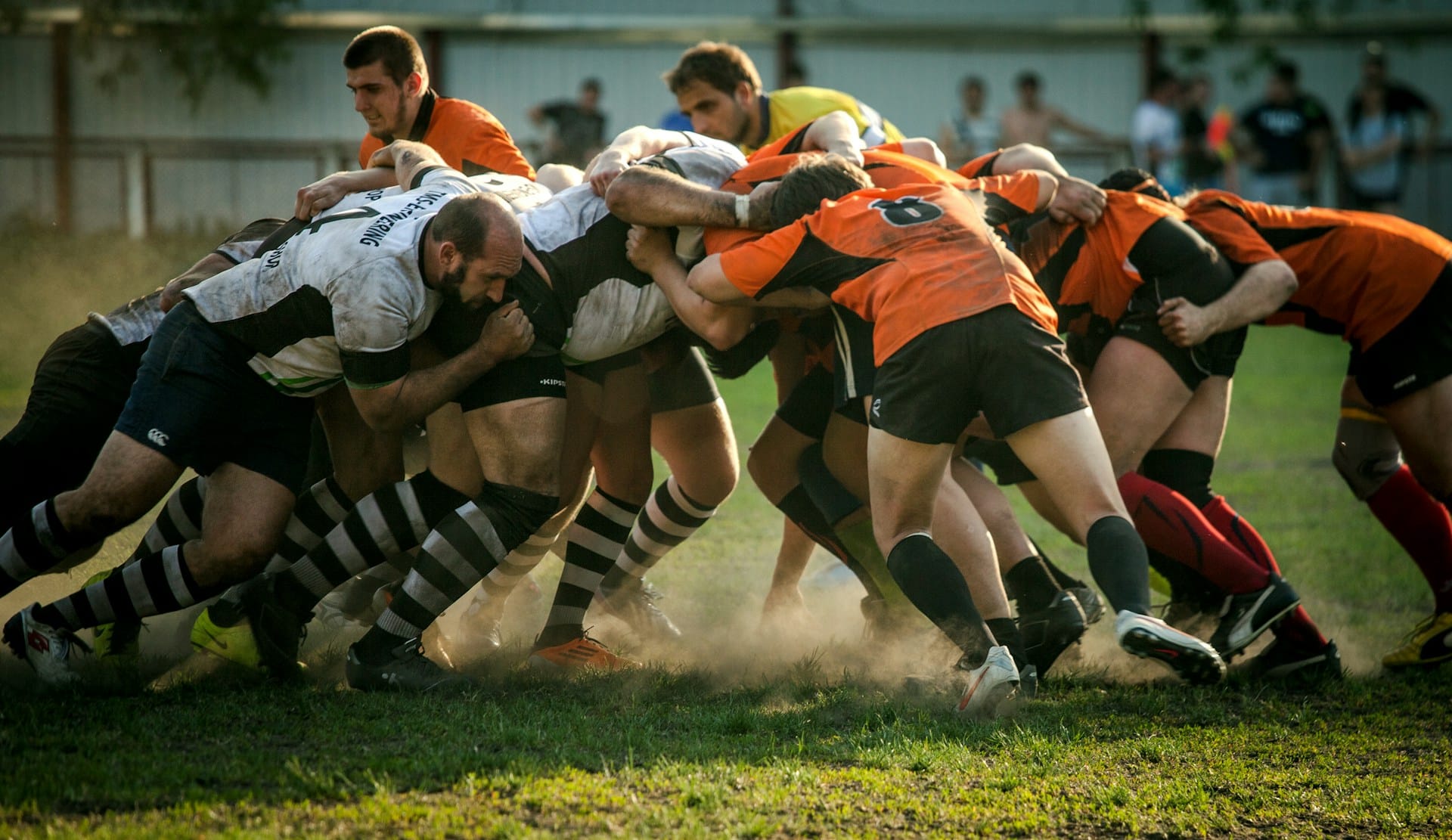How Can Wearable Tech Improve Officiating Accuracy in Rugby?

In the dynamic world of sports, the intersection of technology and athleticism has ushered in a new era. The continuous evolution of technology has set the stage for more accurate monitoring and analysis, particularly in the realm of rugby. Wearable technology, often associated with the fitness industry, has demonstrated its potential to revolutionize the way rugby is played, coached, and officiated. The integration of this technology into the sport promises to deliver increased accuracy, fairness, and performance enhancement. Let’s delve into how wearable tech, through real-time data collection and analysis, can improve officiating accuracy in rugby.
Harnessing the Power of Wearable Tech in Rugby
The introduction of wearable technology into rugby is a game-changer. These devices, small and lightweight, are embedded with sensors that can track and monitor various aspects of players’ performances. This technology provides a wealth of data that can be analyzed to provide valuable insights that can enhance the overall game.
En parallèle : Can Biofeedback Techniques Enhance Concentration in Archers During Competitions?
Coaches and athletes alike have already begun to capitalize on this technology, utilizing it to monitor performance and devise effective training strategies. However, the potential of wearable tech extends beyond just training and performance. It could also be instrumental in improving the accuracy of officiating in rugby, a sport known for its physicality and high-speed action.
Enhancing Officiating Accuracy through Real-time Data
In a sport as intense and contact-heavy as rugby, the margin for officiating errors can be incredibly slim. Accurate officiating is paramount in ensuring a fair game. This is where wearable tech comes in. The real-time data that these devices provide can be invaluable in enhancing the precision of referees’ decisions.
A découvrir également : What Are the Best Recovery Modalities for Reducing DOMS in Marathon Runners?
Wearable devices embedded with sensors can monitor players’ movements, their positions on the field, and even the intensity of physical contacts. This precise data can help officials to make accurate decisions, especially in instances where the naked eye may miss important details. By providing precise and real-time data, wearable tech can effectively minimize human error in officiating and ensure a more accurate and fair game.
Refining Player Monitoring and Performance Analysis
Wearable tech is not just about improving officiating accuracy; it also has a significant impact on the way players are monitored and how their performances are analyzed. These devices provide valuable insights into players’ physical condition, their heart rates, and fatigue levels.
Monitoring player performance in real-time allows for immediate tactical adjustments, ensuring optimal performance throughout the game. It also provides coaches with a deeper understanding of each player’s capabilities and limitations, which can be crucial in devising effective training strategies. The data collected can help identify patterns, understand trends, and even predict future performance, making wearable tech an invaluable tool for both coaches and players.
Bridging the Gap between Players and Fans
The integration of wearable tech in rugby also has implications for fans. The technology not only offers insights into players’ performances but also enhances fans’ engagement with the sport. Real-time data from wearable devices can be shared with fans, providing them with a deeper understanding of the game.
Fans can gain insights into the players’ tactics and strategies, as well as monitor their favourite players’ performances in real-time. This increased engagement can contribute to a more interactive and immersive experience for fans, fostering a stronger connection with the sport and their favourite teams and players.
The Future of Rugby: Data-driven and Fair
The advent of wearable technology in rugby represents a promising shift towards a more data-driven and fair sport. It has the potential to revolutionize not just player training and performance, but also the officiating aspect of the game. By providing real-time and accurate data, wearable tech can aid in making more precise decisions, thereby minimizing human errors and ensuring fairer outcomes.
In addition, wearable tech can also significantly enhance fans’ engagement, providing them with a more immersive and enriched sporting experience. As technology continues to advance, the integration of wearable tech in sports is expected to evolve further, promising an exciting future for rugby.
Utilizing Wearable Tech for Injury Prevention and Safety
Wearable technology has shown tremendous potential in the field of injury prevention and safety in rugby. Given the high-contact nature of the game, player safety is of paramount importance. Wearable devices equipped with sensors can monitor various facets of a player’s physical state, providing real-time data that can be used to prevent injuries and ensure safety.
These devices can track factors such as heart rate, body temperature, impact force, and fatigue levels. This data can be analyzed to identify signs of potential injury risks, like extreme fatigue or abnormal heart rate. For instance, a sudden spike in a player’s heart rate could indicate undue stress or impending health risk, allowing for immediate intervention.
Furthermore, wearable sensors can provide insights into the intensity of physical contacts during a match. By measuring the amount and force of impacts a player withstands, officials and medical teams can better determine when a player might be at risk of a concussion or other injuries. This real-time data can not only help in accurately assessing the situation during the game but also in making informed decisions about whether a player should continue in the match or be rested for safety reasons.
In a nutshell, wearable tech offers a practical solution for injury prevention in rugby, promoting player safety and the longevity of professional sports careers.
Virtual Reality – The Next Frontier in Officiating and Training
The integration of virtual reality (VR) with wearable technology represents a significant advancement in sports technology. VR has the potential to transform both the training and officiating aspects of rugby, making it a promising addition to the rugby tech arsenal.
In terms of officiating, VR can be used to review key moments of the game in a three-dimensional format, providing an immersive experience for referees. This allows them to view incidents from multiple angles, helping to improve decision-making accuracy. For example, in contentious situations such as a try or foul play, VR could provide a comprehensive view of the event, enabling referees to make more accurate judgements.
When it comes to training, VR can be combined with data analytics from wearable devices to create realistic training scenarios. Players can practice in a virtual environment that mimics real game situations, improving their skills and decision-making abilities. In addition, VR can provide a safe way for players to return from injuries, gradually reintroducing them to the demands of the game in a controlled environment.
With the capabilities to enhance both the accuracy of officiating and the effectiveness of training, VR, coupled with wearable tech, is set to usher in a new era in rugby.
Conclusion: Embracing the Digital Transformation in Rugby
At the intersection of technology and sportsmanship, the use of wearable technology in rugby is proving to be a game-changer. The real-time data provided by wearable devices, from players’ heart rates to fatigue levels, is enhancing the accuracy of officiating, contributing to a fairer game. Beyond this, wearable tech is revolutionizing player monitoring, performance analysis, and injury prevention, endowing coaches and medical staff with valuable insights to optimize player performance and safety.
Moreover, the integration of wearable tech is enhancing the fan experience, fostering deeper engagement and providing a more immersive spectator experience. The advent of virtual reality, coupled with wearable technology, promises to further transform the realm of rugby, improving both training and officiating.
In this digital era, the embrace of sports technology in rugby is not just inevitable but necessary. As the sport continues to evolve, the integration of wearable tech and data analytics will be instrumental in shaping the future of rugby. The ultimate goal remains the same – to ensure fair play, improve performance, and enhance the experience for everyone involved – players, officials, and fans alike.
